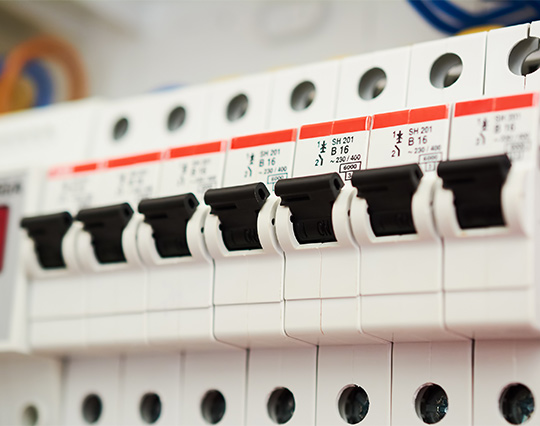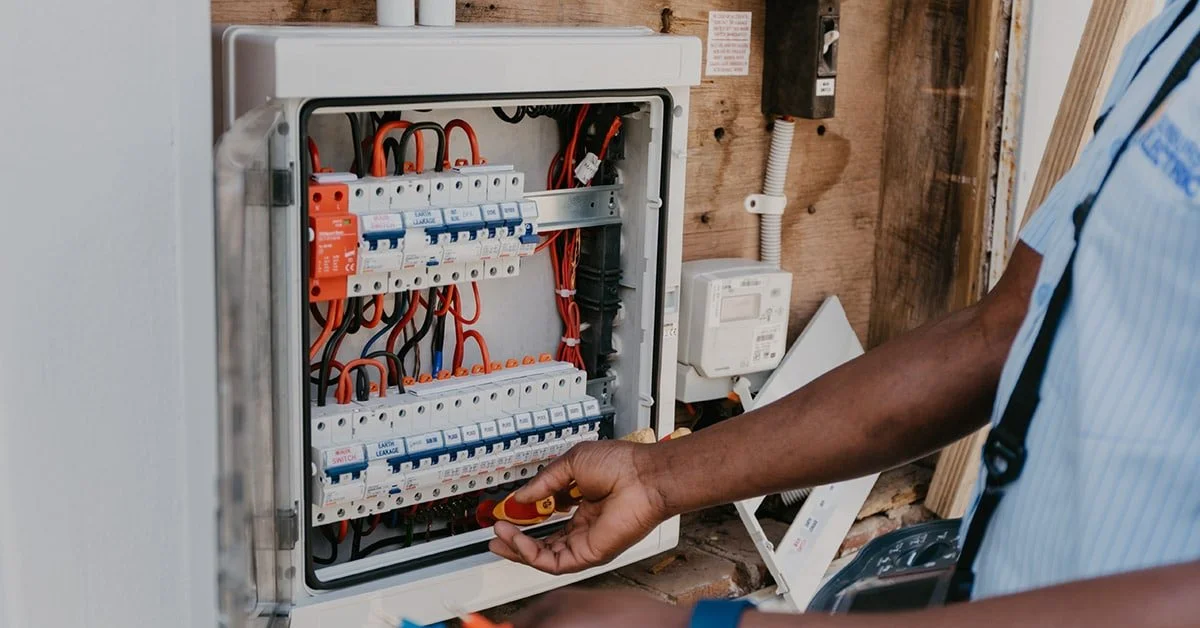
Dealing with a tripped circuit breaker can be common in any household.
When you suddenly lose power to certain areas or appliances, a circuit breaker has likely tripped to protect your electrical system from overload.
Troubleshooting and resolving the issue can save you from the inconvenience of a prolonged power outage.
Table of Contents
What is a Tripped Circuit Breaker?
A tripped circuit breaker is a safety mechanism designed to protect your electrical system from potential hazards. It is a switch that automatically shuts off the flow of electricity when it detects an abnormal current or a fault in the circuit.
This helps prevent electrical overloads, short circuits, and electrical fires.
When a circuit breaker trips, it essentially interrupts the electrical circuit and cuts off the power supply to the affected area.
This can result in lights going out, appliances shutting off, or electrical outlets becoming non-functional. It is a clear indication that something is wrong with the electrical system and requires attention.
Several factors can trip a circuit breaker, including:
- Overloading. When the electrical load on a circuit exceeds its capacity, such as running too many appliances simultaneously or using high-powered equipment, it can cause the circuit breaker to trip.
- Short Circuits. A short circuit happens when the hot wire directly touches the neutral or ground wire, causing a sudden current surge. As a protective measure, this abnormal current flow triggers the circuit breaker to trip.
- Ground Faults. A ground fault happens when the hot wire touches a grounded surface or a conductive material, diverting the current away from its intended path. This can result in a circuit overload that trips the breaker.
How to Locate and Identify a Tripped Breaker?
If you’ve experienced a power outage or electrical issues in specific areas of your home, a circuit breaker has likely tripped.
Here’s a guide to help you locate and identify the tripped circuit breaker:
- Find your home’s main electrical panel in the basement, utility room, or garage. Open the panel’s door to access the breaker switches.
- Look for switches that are in the middle or “off” position compared to the others. These indicate tripped breakers. Take note of any labelled circuits on the panel to identify the affected areas.
- Carefully push the tripped breaker switch to the “off” position before resetting it to the “on” position. This ensures a proper reset.
- If you’re unsure which breaker has tripped, you can systematically turn off and on each breaker switch while checking for power restoration in the affected areas.
- Exercise caution when working with electrical panels, and if you’re uncertain about the process or the breaker continues to trip frequently, it’s advisable to consult a professional electrician.
Tools Needed and Safety Precautions
When troubleshooting a tripped circuit breaker, having the right tools on hand is good to ensure a safe and successful process.
Here are some additional details about the electrical tools and safety precautions involved:
- Circuit tester or multimeter. A circuit tester or multimeter is a versatile tool for measuring voltage, current, and resistance in electrical circuits. It helps you identify if a circuit is live or if there is a fault.
- Screwdriver. A screwdriver, either flathead or Phillips, is necessary to remove the panel cover and access the circuit breakers.
- Flashlight. A flashlight is essential for illuminating the electrical panel, particularly in dimly lit areas, to clearly see and identify the breakers.
In addition to having the right electrical tools, it is imperative to follow all safety precautions when working with electrical systems:
- Turn off the main power. Before opening the electrical panel, always switch off the main power to ensure your safety.
- Use insulated tools. Insulated screwdrivers and circuit testers provide extra protection against electric shocks.
- Work in a dry environment. The area around the electrical panel must be dry to minimise the risk of accidents related to water contact.
- Avoid touching live wires. Never touch exposed electrical wires or connections while the power is on to prevent electric shocks.
Hopefully, you are using the necessary electrical tools and following safety precautions. That way, you can safely and effectively troubleshoot a tripped circuit breaker in your home.
Instructions
When troubleshooting a tripped circuit breaker, it’s important to follow step-by-step instructions to ensure a systematic and safe process.
Here are the instructions to help you with this task:
- Turn off all devices. Before addressing the tripped circuit breaker, turn off and unplug all electrical devices connected to the affected circuit to prevent any potential overload or electrical hazards.
- Find the electrical service panel. Locate the position of the breaker box or the electrical service panel. It is usually situated in a basement, garage, utility room, or exterior wall.
- Locate the tripped breaker. Inspect the breaker switches inside the panel and identify the one that has tripped. The switch will be in a position between “off” and “on” or slightly shifted from the rest.
- Turn the handle to the off and on position. To reset the tripped breaker, firmly push the handle to the off position and then back to the on position. This action resets the internal mechanism of the breaker.
- Test the circuit. After resetting the breaker, you can test the circuit by turning on the devices you previously turned off. The issue is likely resolved if the breaker holds and the circuit remains active without tripping again.
Always exercise caution and follow safety guidelines throughout the troubleshooting process. If you’re unsure or uncomfortable working with electrical systems, it’s always best to consult a qualified electrician for assistance.
How to Avoid Tripped Breaker and When to Call an Electrician
To avoid tripped breakers and ensure the safe operation of your electrical system, it’s important to follow certain practices and know when to seek professional assistance.
Here are some tips to help you prevent tripped breakers and understand when it’s time to call an electrician:
- Avoid overloading circuits. Be mindful of the power demands of your electrical devices, and avoid plugging multiple high-wattage appliances into the same circuit. Distribute the load evenly across circuits to prevent overloading.
- Spread out power usage. If you notice certain circuits frequently tripping, try redistributing the devices or appliances connected to those circuits to different areas of your home. This helps balance the electrical load and reduces the likelihood of tripping.
- Use surge protectors. Plug sensitive electronics and valuable equipment into surge protectors to safeguard against power surges. This helps prevent sudden spikes in electrical current that could trip the breaker.
- Regularly inspect wiring and connections. Check for any signs of loose or damaged wiring, frayed cords, or overheating electrical outlets. If you notice any issues, it’s important to have them addressed by a qualified electrician to avoid potential hazards. Problems with electrical cables are hard to detect, so look closely.
- Understand breaker ratings. Each circuit breaker has a specific amperage rating that indicates its capacity. Ensure you’re using breakers matching the electrical load requirements of your devices and appliances. Using the wrong rating can lead to frequent tripping or even damage to the electrical system.
Knowing when to call an electrician is crucial for your safety and the proper functioning of your electrical system. Consider contacting an electrician in the following situations:
- Frequent tripping. If your breakers frequently trip, it could indicate underlying electrical issues requiring professional attention.
- Burning smell or sparks. If you notice a burning smell, sparks, or any other signs of electrical problems, it’s essential to contact an electrician immediately, as these indicate potentially hazardous conditions.
- Outdated electrical system. Suppose your home has an older electrical system or hasn’t been inspected in a long time. In that case, it’s advisable to have a professional electrician evaluate the system for safety and potential upgrades. Changing a faulty electrical cable can make all the difference in your electrical repair bill.
- Complex electrical projects. For any significant electrical installations, renovations, or upgrades, it’s best to involve a licensed electrician with the expertise and knowledge to handle such tasks safely and efficiently.
Electrical repairs can be dangerous if not handled properly, so it’s always best to consult a qualified electrician if you have any concerns or doubts about your electrical system. They have the expertise to diagnose and address electrical issues, ensuring the safety and reliability of your home’s electrical infrastructure.
Conclusion
Finally, knowing how to avoid tripped breakers and when to call an electrician is critical for maintaining a safe and dependable electrical system in your home.
You can reduce the occurrence of tripped breakers by taking preventive actions such as avoiding overloading circuits, spacing out power demand, and routinely examining wiring. It is, however, critical to understand when expert aid is required.
If you have regular tripping problems, detect burning odours or sparks, have an outdated electrical system, or need sophisticated electrical repairs completed, it is recommended to contact a licenced electrician so to ensure that your home’s electrical infrastructure operates properly and safely.


